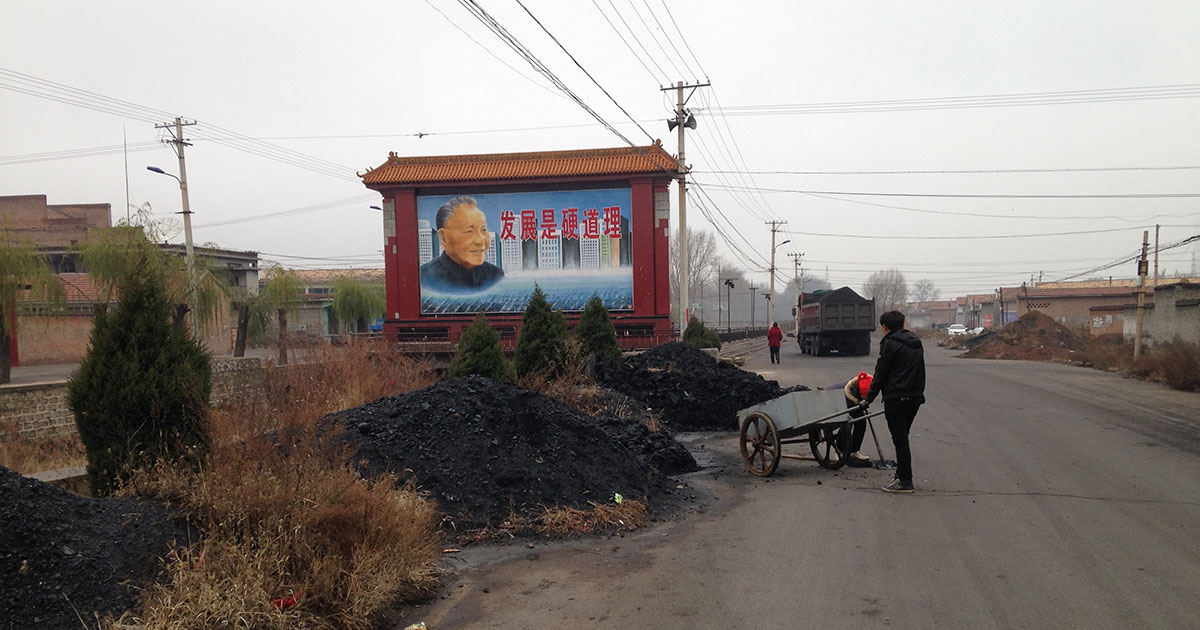
The rollout of a home-heating coal ban across northern China has many communities switching to cleaner-burning energy sources. Photo credit: Ellison Carter
Since 2017, the government of China has undertaken a massive effort to eliminate coal-based heating in several million homes, replacing traditional stoves with cleaner energy sources.
Taking place in China’s Beijing Municipality region, plans are underway to eventually expand the space-heating coal ban across northern China. The aim is to cut greenhouse gas emissions while reducing household air pollution as a contributor to disease and death.
Colorado State University air pollution researcher Ellison Carter is on a team that’s trying to measure the coal ban’s effects on household energy use, indoor air quality and air pollution exposures, and overall well-being of residents. Publishing earlier this month in Nature Energy, the team, led by McGill University social scientist Christopher Barrington-Leigh, reported that households who had switched from coal to subsidized electricity had seen measurable benefits in indoor ambient temperature and lowered pollution levels. But they also found that households in lower-income districts had experienced negative impacts on their well-being as a result of the ban.
The team includes Canadian researchers Jill Baumgartner and Brian Robinson from McGill University in Montreal as well as Chinese researchers from Peking University and the Chinese Academy of Sciences in Beijing.
An assistant professor in CSU’s Department of Civil and Environmental Engineering, Carter has worked on air pollution issues in China since 2012. Her most recent field work in China was supported by a grant from the Office of the Vice President for Research, awarded shortly after she joined the CSU faculty in January 2017.
Ban vs. non-ban households
In Nature Energy, the team described a pilot study for which they collected data in March and April 2017. Within three Beijing Municipality districts covering a range of economic and geographic conditions, they surveyed two villages per district. One village was a participant in the government-initiated coal ban and heat pump subsidy program, and one had not yet been enrolled in the ban.
Across 300 homes in the pilot study, the researchers gathered survey data on the communities’ compliance with the coal ban as well as their reactions to it. Carter led the deployment of sensors in about 50 of the homes. She collected data on temperature, thermal comfort, and the presence of breathable particles associated with health risks, known as “PM 2.5” in air pollution parlance.
“We looked at multiple lines of impacts, which we hope gives us more insight into how this policy is impacting households, at least in its early stages,” Carter said.
Her analysis revealed that ban-compliant homes were slightly warmer than homes still using coal – countering fears that people barred from burning coal would be cold or uncomfortable. She also observed lower indoor air pollution levels in homes enrolled in the coal ban.
While one would expect that the coal ban would reduce indoor air pollution, Carter noted that air pollution is a complex and multilayered problem. It comes from many sources, not just coal combustion, and sources can originate indoors or outdoors. Furthermore, reduction of pollution from coal combustion at a village level might make little to no difference in outdoor air pollution levels, if neighboring villages are still burning coal. Her chief aim is to identify key benchmarks that determine the coal ban’s measurable effects and outcomes.
Differences across incomes
According to the paper, the households in higher- and middle-income districts ceased using coal for space heating, as the policy intends, with benefits across the board in indoor temperature, indoor air pollution, and life satisfaction. But in lower-income districts, the policy was only partially effective. Since some households were unable to fully comply with the ban, likely due to economic hardship, those households experienced fewer benefits to their indoor environments as well as lower scores in areas like “satisfaction with life” and “satisfaction with living conditions.”
The team has secured additional funding from the Canadian Institutes of Health Research to continue studying the coal ban on a larger scale over multiple years. This past winter, they enrolled an additional 1,000 homes in their study and will follow up with a second field campaign in winter 2019-20.